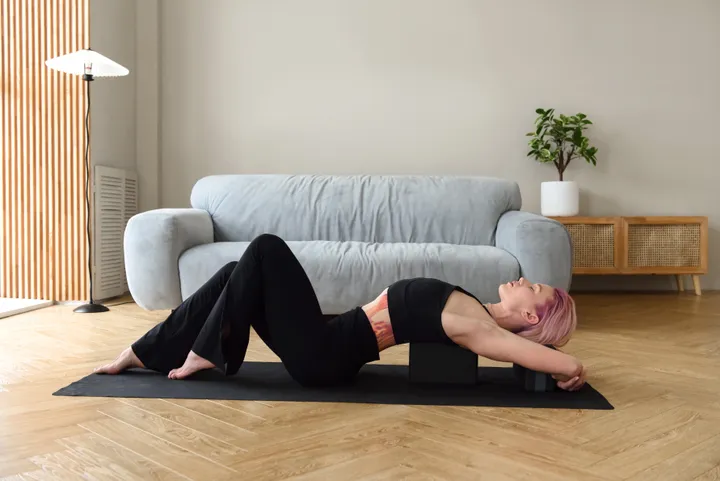Prior to being a consistent attendee at my nearby yoga studio, I had the belief that the rectangular blocks were intended to assist in maintaining balance during difficult yoga postures. However, from my experience in many workshops, I have come to understand that this adaptable tool can play a crucial role in achieving a simple yet profound stretch and alleviating stress in your back and hips. By simply reclining on them for a few period, you can immediately experience a sense of alleviation.
Jen Purwin, a former yoga teacher and physical therapist specializing in pelvic health and orthopedics at Fem First Health in Manhattan, posits that the sensation of relief experienced when reclining on yoga blocks (or other yoga props) is a result of the external support provided to the muscles, facilitating relaxation and enabling gravity to assume the burdensome tasks.
The block in question could potentially be located behind the thorax or the ribcage, namely beneath the head or on the outside surfaces of the knees. Once an individual is in a state where they are not required to engage the inner thigh muscles, specifically the glutes, the muscle is afforded the opportunity to undergo passive elongation.
According to Purwin’s description, during a normal muscle contraction, the protein filaments in your muscles undergo a process of pulling towards each other and subsequently returning to their original position. However, when your muscles are taut, it indicates that these protein strands are excessively coiled together.
“You may attempt a more vigorous stretching technique, but by allowing time and gentle gravitational forces to occur, you are facilitating the elongation of these protein filaments, causing them to slide back to their proper positions.” By enabling these structures to return to a healthy baseline, you are gaining additional power.
Purwin suggests using the passive stance depicted below, which can be easily performed at home without necessitating excessive physical strength, flexibility, or specialized equipment.
In addition to the aforementioned passive deep stretches, Purwin asserts that blocks are also highly beneficial for engaging in more dynamic poses within the context of yoga, pilates, or any form of home-based stretching. The utilization of a rectangular block, which may be employed at any of the three heights to enhance length, facilitates the optimization of practice sessions, whether engaging in lunges or attempting to bend over and touch one’s toes.
Presented here is my preferred yoga block, along with a selection of top-rated goods that have received strong recommendations from reviewers. The majority of them have dimensions of 9x6x4 inches, although they vary in terms of weight and density to cater to individual preferences.
HuffPost and its publishing partners have the potential to earn a profit from certain purchases facilitated through the hyperlinks provided on this webpage. The HuffPost Shopping team separately curates each item. Pricing and availability are contingent upon modification.
